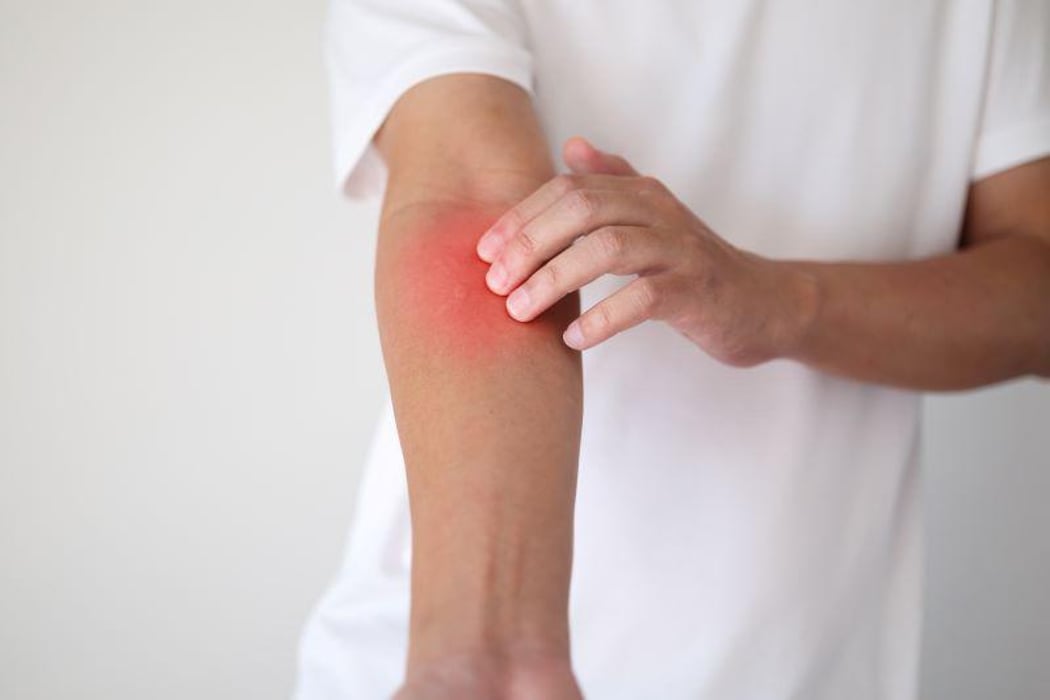Skin Issues Can Be First Sign of Rheumatological Illnesses

TUESDAY, April 25, 2023 (HealthDay News) -- Skin conditions may be the first sign that a person has a rheumatic disease that will also affect the joints, muscles or ligaments.
It’s essential to know what to look for, said Dr. Kathryn Dao, an associate professor of internal medicine in the Division of Rheumatic Diseases at UT Southwestern in Dallas.
“Skin lesions can occur at any time,” Dao said in a university news release. “If they are associated with an autoimmune disease, they will manifest when the disease is active. When autoimmune diseases are treated, the skin lesions will usually improve.”
People should see their doctors if their skin lesions are painful or if they are combined with other symptoms, such as fever, weight loss, diarrhea or joint swelling. It is fine to monitor skin conditions to see whether they resolve on their own if there are none of these other symptoms, Dao said.
“If the lesions progressively get worse, patients should try to get in to see their doctor sooner for an evaluation,” she said.
Dao said it's important to avoid scratching skin lesions, which may worsen or cause an infection. She also urged people to protect themselves from the sun and get regular skin checks.
Dao and colleague Dr. Benjamin Chong, an associate professor of dermatology at UT Southwestern, highlighted some common skin problems that they say could foretell of a serious rheumatic condition.
Photosensitivity can be an early symptom of systemic lupus erythematosus (SLE) or dermatomyositis, a rare disease that can cause muscle weakness and skin rashes. Direct sun or ultraviolet light exposure could damage the skin, they said.
Sun exposure may produce rashes, including those that are located on the bridge of the nose and cheekbones in those with SLE.
Some lesions might look like ringworm with rough, red patches. This can signal subacute cutaneous lupus. Damage, such as scarring, hair loss, and lighter and darker skin, could be permanent in cases of discoid lupus.
Redness and itching might appear over the scalp, chest, neck, eyelids, hands, arms and other areas exposed to the sun with dermatomyositis. Patients may also have thickened, red plaques on the knuckles. It’s important to use sun protection when outdoors, including wearing hats, long-sleeved shirts and pants.
Red, raised, scaly, silvery and itchy skin can be a sign of psoriasis. The lesions are on the scalp, elbows and knees most often, but can appear on the face, armpits, back, navel, groin and buttocks. Scratching could produce more lesions. Exposure to sunlight can help reduce lesions in those with psoriasis.
Patients with a condition called Raynaud’s phenomenon have sluggish blood flow. This can cause white, purple or red coloring on extremities, including fingers, toes, ears or nose. Cold or stress can act as triggers. People with this condition should keep their extremities warm.
Painful, large, red nodules on the legs could be indicative of erythema nodosum, which is due to inflammation of the fatty layer of skin. This may be caused by an infection, drug reaction, pregnancy or an autoimmune disease.
More information
The U.S. Centers for Disease Control and Prevention has more on rheumatic diseases.
SOURCE: UT Southwestern Medical Center, news release, April 21, 2023
Related Posts
Singing Might Aid Recovery After a Stroke
TUESDAY, Jan. 3, 2023 (HealthDay News) -- Singing may help stroke patients...
Proteja a su bebé de los dañinos rayos UV del sol
DOMINGO, 25 de junio de 2023 (HealthDay News) -- El verano ha llegado, y la...
Lenabasum Studied for Refractory Cutaneous Dermatomyositis
TUESDAY, Oct. 11, 2022 (HealthDay News) -- Lenabasum is well tolerated for the...
New Hope Against Painful Skin Issues Caused by Cancer Radiation Therapy
MONDAY, May 8, 2023 (HealthDay News) -- When Ann Alexander underwent...
